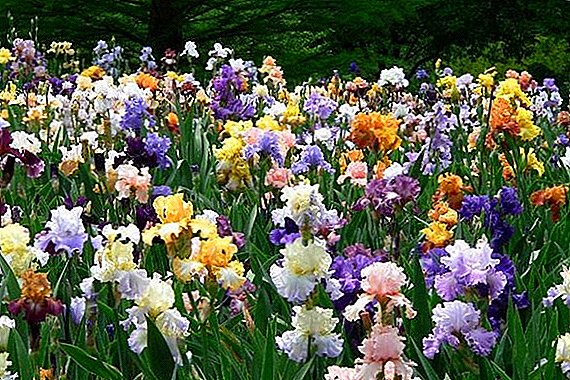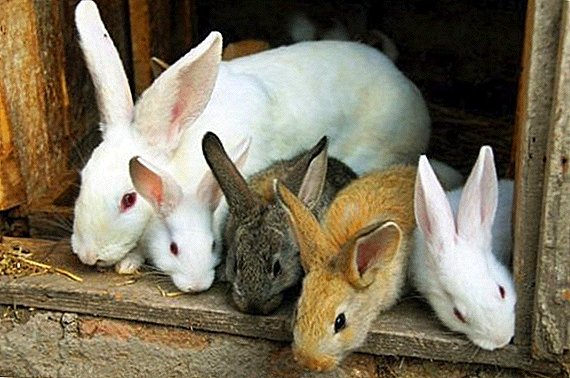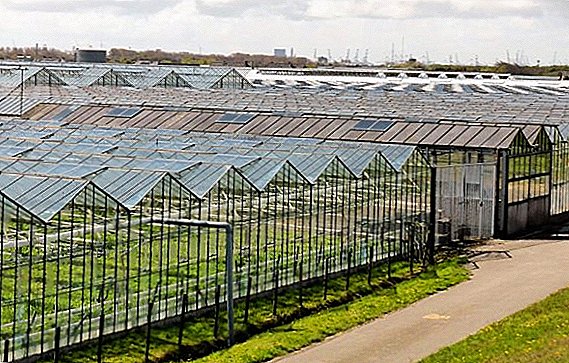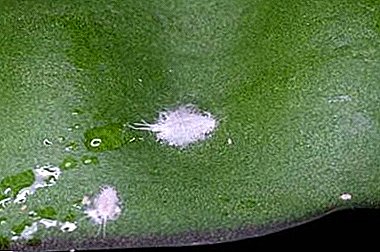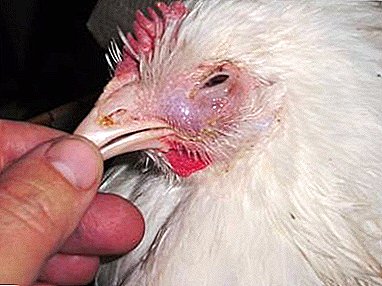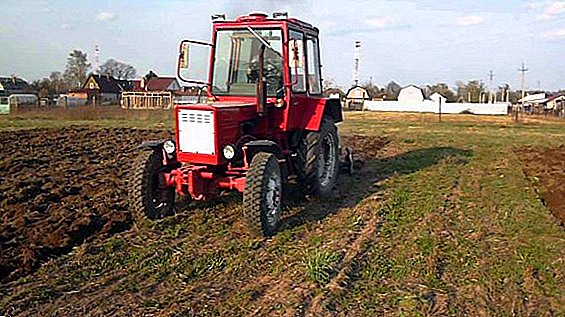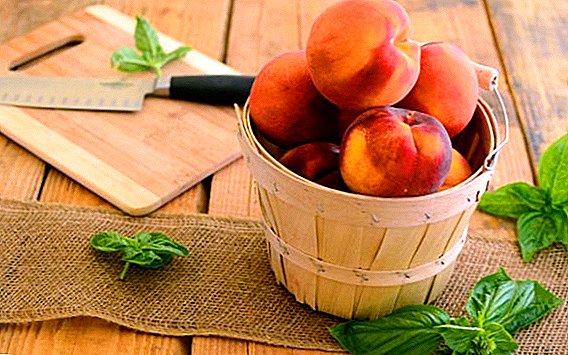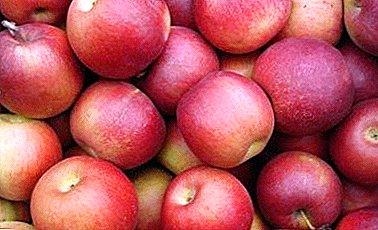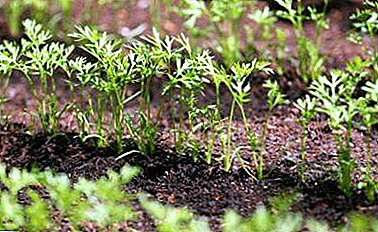
Seed germination is an important characteristic that shows exactly how much of the sown carrots can be grown. Therefore, before landing, check this parameter. Let us figure out how germination is checked, on what it depends - and whether it is possible to somehow improve this figure before landing began.
From the article you will learn what is taken into account when determining germination, is there a difference in laboratory and field form, why it is important to check it before planting, and whether it depends on the shelf life of the seed. Find the best ways to test and increase the germination of carrots.
What it is?
First of all, it is necessary to determine the fact that the germination of seeds is generally. This term refers to the ratio between the total number of seeds and those of them, which in certain conditions gave a sprout. Relatively speaking, if you take 100 individual seeds of carrots (or another plant - germination is calculated for any culture), to place in suitable conditions and when calculating to find out that 87 of them have sprouted - it means that germination is 87% specifically for this batch of seeds.
In addition, when determining the germination rate:
- Conditionsin which the seeds germinated.
- Timing, for which they formed seedlings.
Both that, and another for each separate culture at industrial cultivation is defined by state standard specification.
Laboratory and field - what's the difference?
 Germination is of two kinds:
Germination is of two kinds:
- Laboratory.
- Field.
The difference between them is as follows.:
- Laboratory room germination is determined in the laboratory on samples. Experts do just that: take a few samples from the seed lot (usually at least 4) with 100 seeds each - and germinate them in the laboratory.
- Field germination is determined directly on the field after the seeds are sown. The total number of seeds sown on the plot is taken, the number of seedlings is counted - and then the germination percentage is calculated. If the planting was carried out on the field, then the calculation is carried out taking into account the seeding rates (they are set up for the planter manually) and the number of shoots in a certain area.
Field germination is always lower than the laboratory. In the laboratory cups of growth all the seeds that are capable of this are touched. In the field, inevitably, some of the seeds or seedlings die from pests, diseases, violations of agricultural engineering and other factors.
In some cases, the difference can be very serious - up to 20-30%. Carrots are among the plants in which field germination is very different from laboratory: improper sowing, pests or frost can ruin, and quite viable seeds.
Why is it important to check before boarding?
Seed germination allows you to determine how much the number of seedlings can be hoped for. And this, in turn, allows:
- At least roughly estimate what the expected yield.
- Determine whether it makes sense at all to sow this batch of seeds. If germination is too low, you should not use it: you will spend time and effort, occupied an area on which to plant something else.
- The higher the germination rate, the lower the seeding rate. When the carrot gives at least 70% germination - the seeds can be sown at the rate of about 0.5 g per 1 square meter. m. With a lower germination rate increases - up to 1 g per 1 square. m
What does it depend on?
 Germination depends on the following factors:
Germination depends on the following factors:
- The quality and maturity of the seed lot. If the seeds were harvested immature, improperly stored, damaged, their germination rate is significantly reduced, in some cases to zero.
- Conditions in which the seeds were stored. If a batch of seeds was stored with excessive or insufficient air humidity, too high or low temperatures - part will inevitably die, and germination will decrease.
- Storage time. The longer the seeds are stored - the more of them die.
How interrelated with shelf life?
The shelf life of seeds and the percentage of germination is directly related: the shelf life refers to the period during which seed germination decreases below the norm established by state standards or another standard document. Simply put, those seeds that still can germinate in significant quantities are considered suitable, taking into account the inevitable losses.
What is the usual shelf life?
The expiration dates for seeds of any crops are usually determined by plant growers during a series of experiments. The results of their observations are recorded in reference books, GOSTs and other regulatory documents. Specifically for carrots, seed producers usually apply GOST 32592-2013, GOST 20290-74 and GOST 28676.8-90.
Besides, need to consider the date of packing of seeds. According to the Order of sale and transportation of seeds (approved by the order of the Ministry of Agriculture of the Russian Federation No. 707 of 1999), the shelf life for sale depends on the time of packaging. The same batch of seeds packed in paper bags in October 2018 will be valid until December 2019.
But if the same consignment, having lain for several months in warehouses, will be prepacked in January 2019, then December will already be the end of the shelf life.
Thus, it follows from the following:
- The period during which the seeds of carrots can still rise in significant quantities - 3-4 years from harvest. The best option is 1-2 years, after this period it will be necessary to increase the seeding rate at least one and a half times.
- Humidity should be at least 30% and not more than 60%.
- Temperature - from 12 to 16 degrees.
- Seeds should be stored either in an opaque package or in a dark place.
How to check the seeds?
Sprouting
This method should be applied shortly before the actual planting of carrots. It looks like this:
- In a wide but shallow dish is placed on the bottom of the gauze, on top - a rag folded several times from linen or cotton fabric.
- On a rag fall asleep seeds - gently, evenly.
- Rag soaked, but so that standing at the bottom of the water does not cover the seeds.
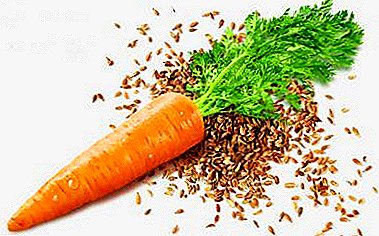 The dishes are covered with glass and kept in a warm (that is, at least 10 degrees) place. It is recommended to turn the cloth every 12 hours.
The dishes are covered with glass and kept in a warm (that is, at least 10 degrees) place. It is recommended to turn the cloth every 12 hours.- After 2-4 days, you should select those seeds that have leaked (it is recommended to use tweezers - they are quite small in carrots) and used for planting.
Another method is simpler, but allows only to determine the germination, and not choose suitable seeds. For this:
- In a box with a dense bottom and low sides placed a layer of about 2 cm of soil.
- Then sow carrot seeds.
The number does not matter, but it is better if their number is a multiple of 100 or at least 50 - in order to more easily consider germination. The soil is moistened and placed in a warm place (with a temperature not lower than 20 degrees) for 12-14 days. After that, the number of sprouts is simply calculated.
Placed in water
Seeds are placed in approximately the same bowl as in the previous case, filled with warm water and kept for about a day. Then the seeds are drained, slightly dried and used for planting, selecting those that have hatch.
This method is not so much a germination test (although the selection is made), how much stimulation. therefore it is recommended to use not just water, but growth stimulant solution at the dosage prescribed by the manufacturer.
With toilet paper
This method is simple:
- Take toilet paper (the simplest, without dyes or flavors).
- It is laid out in 4-6 layers on a plate and richly moistened with warm water.
- On the layer of paper laid out the seeds at the rate of 1 seed per 1 square. cm.
- The container is placed in a warm place and held there, as it dries, moisten the paper.
- Germination seeds are planted, and non-adults are rejected.
Another option is to use a plastic bottle.:
- It is cut lengthwise, 7-8 layers of paper are put inside, moistened with a sprinkler, and seeds are put inside (at a distance of 1.5-2 cm from each other.
- Then the construction is tied with polyethylene and left in a warm place for 10-14 days. Watering is not necessary: the condensate formed under the polyethylene layer will cope on its own.
- After rejecting the unripe seeds, the remaining ones are ready for planting.
Saline solution
 This method allows you to determine how much germination, how to calibrate and discard unsuitable seeds. It consists of the following:
This method allows you to determine how much germination, how to calibrate and discard unsuitable seeds. It consists of the following:
- Seeds are placed in a salt solution. Its strength should be 5% (a teaspoon of salt per liter of water).
- Aged for 40-60 minutes.
- All sprouted seeds are discarded and discarded.
- The remaining seeds are washed from the salt in pure water, dried slightly and used for planting.
Examples of the use of results
If a batch of carrot seeds is tested, the following options are possible:
- Rejection of the party. This is possible if the germination was used in the ground - and it showed germination below 30%. Use for planting such seed is not recommended.
- Increase seeding rate. This is possible both when sprouting in the soil, and using other methods - usually not the whole seed stock of a gardener or a farmer is usually tested. If germination was about 50-70% - should increase the seeding rate. If germination was approximately at the laboratory level (that is, 90-95%) - you can use the standard seeding rate.
- Calibration of seeds and rejection of unsuitable. This option is suitable if saline solution was used: you can put all the seeds in it. In this case, obviously unattractive (injured, hollow, etc.) seeds are removed, and the remainder is used for planting. However, we must remember: soaking in salt says nothing about germination. It only allows you to remove deliberately poor quality material.
How to increase the number of seedlings?
It should be remembered: if the seeds died, no action will not allow them to resurrect. Therefore, measures to increase germination are aimed only at preventing further death of seeds, calibrating existing ones and stimulating development. The methods can be used as follows.:
- Soak in the solution with additional feeding.
- Pre-rinse to get rid of vegetable oils that isolate the germ from the air. Soaking is carried out for 10-15 days with a regular change of water.
- Warming up
- Disinfection in a solution of potassium permanganate.
- Pre-germination at a temperature of 25-28 degrees.
From the germination of seeds depends on the number of plants that can be obtained during planting. The higher the germination rate, the lower the seeding rate. Therefore, before sowing, it is necessary to calibrate the seeds and check how much they can ascend.


 The dishes are covered with glass and kept in a warm (that is, at least 10 degrees) place. It is recommended to turn the cloth every 12 hours.
The dishes are covered with glass and kept in a warm (that is, at least 10 degrees) place. It is recommended to turn the cloth every 12 hours.